#1902 coronation
Text

Queen Mary of the United Kingdom, consort of Kind George V, when she was Princess of Wales, on the occasion of King Edward VII's coronation, 1902.
#Queen Mary of the United Kingdom#Queen Mary#mary of teck#Princess of Wales#british royals#british court dress#british royal family#british royalty#history colored#colored photography#1902#1902 coronation#king edward vii's coronation#1900s#1900s fashion#edwardian
223 notes
·
View notes
Text
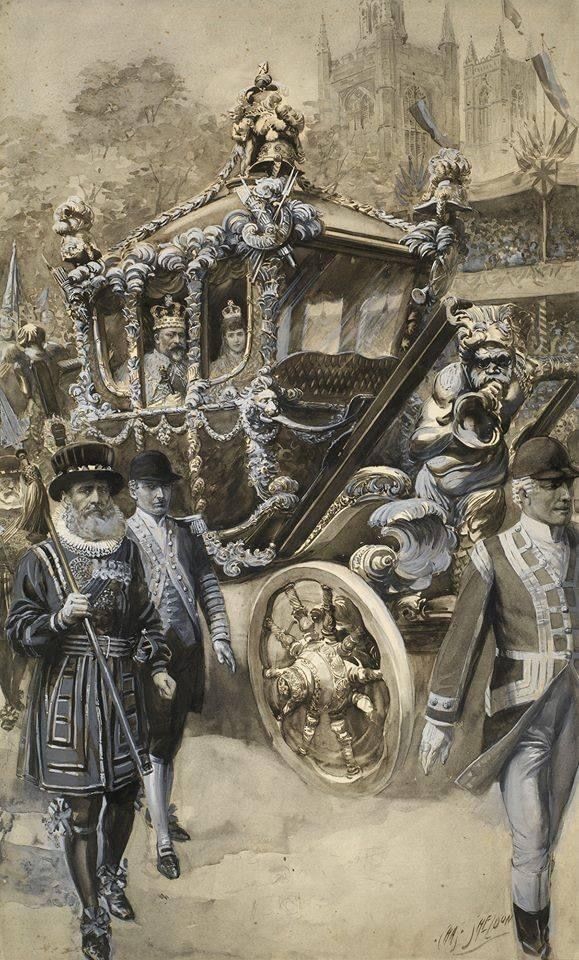
An illustration of Queen Alexandra and King Edward VII on their way back to Buckingham Palace after their Coronation, 1902.
124 notes
·
View notes
Text
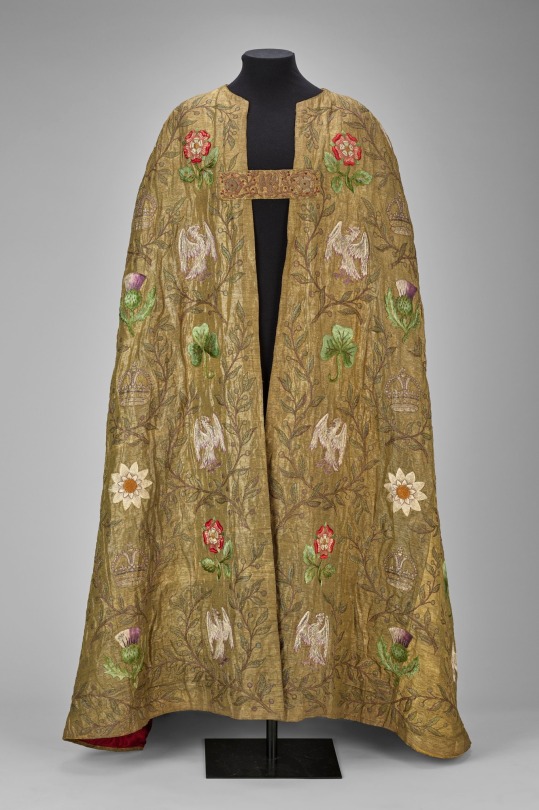
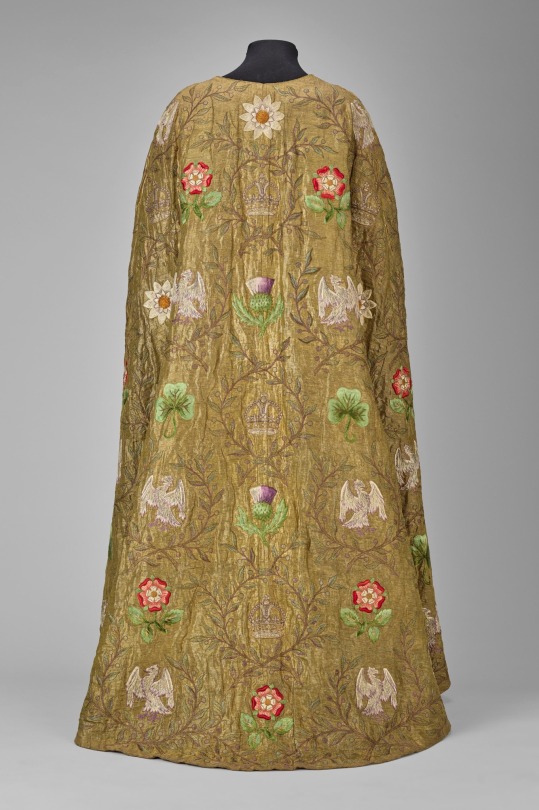
Gold Silk Mantle, 1902, British.
Worn by Edward VII at his Coronation.
Royal Collection Trust.
#gold#silk#mantle#coronation#Edward vii#1902#1900s#British#Britain#1900s britain#royal#royal collection trust
10 notes
·
View notes
Text

Coronation Necklace, Garrard, 1858-1911


Queen Victoria (1887)
Queen Alexandra (1902); without its pendant
Queen Mary (1911) /
Queen Elizabeth The Queen Mother (1937); without its pendant
Queen Elizabeth II (1953)
Queen Camilla (2023)
134 notes
·
View notes
Photo





Coronation Photos 1902, 1911, 1937, 1953, 2023.
197 notes
·
View notes
Text
How Did the Big 4 Affect Ideas About Scrap for the Steam Engines:
Alright, so in the Railway Series, we know that scrap and the idea of scrap is horrifying to the engines. But the real question is: was this a universal thing? Were all the engines equally horrified, or were there differences.
I mean, from that one infamous illustration in the Railway Series, it seems pretty universal...

But I think that if we dive a little deeper, there may be a few other factors at play, which collectively create very different views on scrap - and they all have to do with the Big 4. I'm going to explain them by size, so let's start giant and get smaller.
LMS:
The LMS engines would not be as surprised to hear they're being replaced and scrapped as other companies. Why? Well, we have to look back a bit. In the 1920's, the LMS was a bit of a hodgepodge of constituent railways and their engines. The Midland 'small-engine' policy did mean that a lot of the bigger engines were frowned upon, but in general the engines were just... there.

This changed with Stanier. When Stanier came along, he began building larger, faster, more powerful engines - and thus a lot of the older, smaller classes were axed. Engines classes like the Black Fives, Coronations and 8F's could do the work of these older engines much better!

There was only one class of engine built by the Furness that survived into BR ownership, and they weren't the only company with this happening. The engines of the LMS would've been accustomed to these ideas. And where does D261 come from? Well, the Class 40 diesels were used on the West Coast Mainline - D261 would be very used to the steam engines being very accepting of the idea that this was 'their time', and therefore stunned at how the Sodor engines acted.
The opposite end of this was that smaller engine classes were very afraid of being withdrawn. Edward's a great example of this - he watched his entire railway be taken over and all his friends and family replaced - and he fears he might be next. It drives him to extreme lengths to prove his worth, just to try and gain a few more years. Donald and Douglas are another example of this; as Caledonian Railway engines, they were generally under the threat of being scrapped all through their careers, and this created a desire to prove themselves and survive.
The LMS as a company committed to this 'purge' of smaller, older classes, and thus the engines of the LMS would have been far more used to and accepting of the idea of being scrapped as compared to others. It was part of the company culture! It wasn't universal by any means, but it had an impact, especially in the English part of the LMS.
LNER:
The exact opposite of the LMS. The LNER was a railway that was throughout its existence very, very poor. And while it did build some stunning-looking express engines...
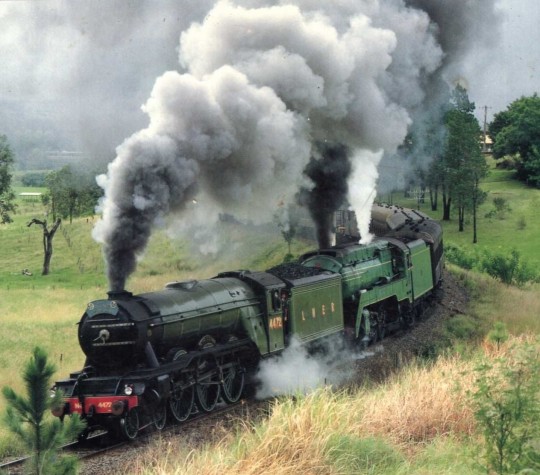
... in actuality, many of the engines running on the LNER were constituent engines that were just kept going. A good example of this would be the C1 Atlantics, which were introduced in 1902, and weren't completely withdrawn until 1950!

The LNER just didn't have the money or the ability to commit to a drastic newbuild scheme like the LMS did. That isn't to say that old engines weren't scrapped, but it did mean a lot more of the older classes weren't. And when a large body of engines survive for 50 odd years, the culture of elongated existence survives with them. Gordon is so badly affected by the Modernisation Plan personally because his company culture was one of preservation and extended service. His brothers would have quite happily told him that even when they were supplanted by the A4's that they'd be around for a long time yet, because that's how the LNER worked. And then they weren't and Gordon was stunned.
And remember, the LNER is the railway that preserved City of Truro alongside a bunch of its elderly engines at York. This railway had a culture that was built around a sort of trickle-down duties. As express engines were supplanted, they simply moved down the chain.
Speaking of City of Truro...
GWR:
This is another railway whose engines are stunned by the Modernisation Plan, but for a very different reason. Both the GWR and the LMS scrapped a large number of engines in the 1930's, but unlike the LMS, the GWR focused on engines who were at the end of their useful lifespan.
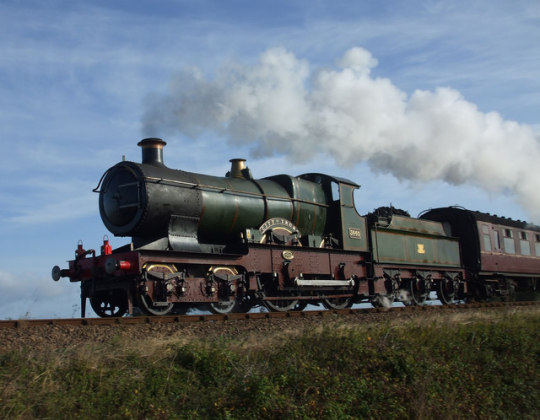
City of Truro was around 30 when withdrawn. For an engine introduced at the same time as the C1 Atlantics, this seems short - but its about average for the GWR at the time. The shock to the GWR engines is not the fact they're being scrapped - it's the fact that engines not at the end of their useful lifespans are being scrapped.
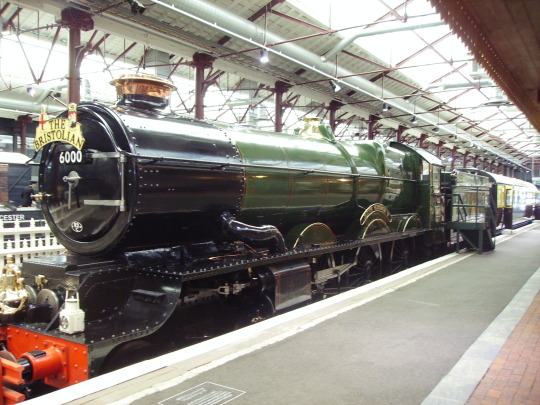
The King class was built in 1927 and nearing the end of their lifespan, but the Modified Halls weren't, and neither were the 9400's. Their withdrawal and subsequent scrapping was what really shocked Western engines.
Oliver's class was built in the 1930's, and would have expected to survive into the late 1960's and 1970's. The sudden withdrawal of them all would have been a great shock, and one of the driving factors behind his escape.
And then in the Railway Series, Duck doesn't act all that surprised to hear steam engines are being cut up - but he is hostile to diesel engines. The reason? Because diesel engines aren't just replacing the old engines in the natural GWR order of things, but supplanting the entire lot. He's relatively fine with Bear though because unlike many of the other diesels, Bear's class could be very easily perceived as being a natural progression of GWR engines. They took over the jobs of Castles and Kings - engines built in the 1920's and nearing the end of their GWR lives. There is of course also his outburst, which gives off a very GWR vibe - telling an engine off for insulting another railway? I wonder which of our Famous Eight has also done that...
Southern:
Right, so the Southern is possibly the most interesting case of them all. And the reason for that is this:
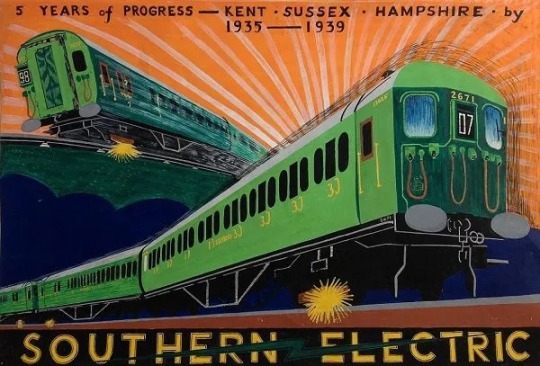
The Southern Railway was both the smallest of the Big 4 and the most passenger orientated. As such, they naturally gravitated towards a program of electrification, which they saw as the best way to maximise their profits. Engines on the Southern would have been invariably told that they would be withdrawn someday when the electrification reached their part of the line. That is a level of certainty that would have a massive impact on how the engines viewed their fate.
It also meant that the Southern Railway was not focused on replacing the steam engines they already had with new ones. This allowed some truly ancient engines to make it to British Railways.

This is Fenchurch, and when withdrawn in 1963 he was the oldest engine working on British Rail. He was built in 1872 - so that's a career of 91 years. And another class that was hitting pensioner years in British Rail was the Adams Radial Class, built in 1882. Both Southern Railway engines that found a niche duty that wasn't going to be electrified or upgraded anytime soon.
Even the E2's had their own niche at Southampton docks! They were a failure of a class when built, and yet were still in service in the 1960's. Thomas the tank engine himself has remarkably little to say about modernisation in the books - his job is threatened by a diesel, and while he's horrified that it's a diesel, he's not shocked he's being replaced. Even though he spent a tiny amount of time in the south, its culture managed to penetrate his smokebox.
But there is one other railway that has a central role in this, and it is of course British Railways.
British Railways:
Right, so this is the one company that is the cause of much of the above commentary to become obsolete. When amalgamated, British Rail was meant to electrify the country's railways slowly and steadily, with steam engines making up the difference. And at the onset, they withdrew and scrapped many of the older, smaller classes of engines and replaced them with the Standards - something very similar to LMS and GWR practice, and also not unfamiliar to the LNER. The really problem comes with the Modernisation Plan in 1955.
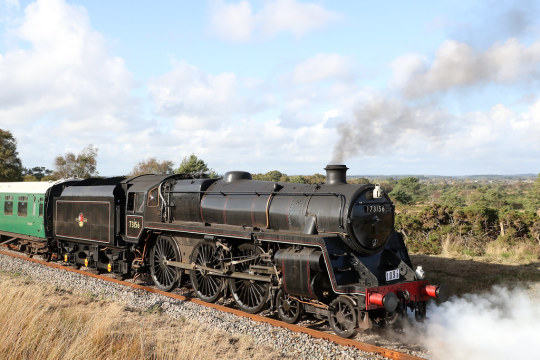
The Standard Five class were built until 1957 - two years after the publication of the Modernisation Plan which explicitly stated that BR would scrap all steam. The 9F's were being built until 1960. At the longest, these engines got less than twenty years. At the youngest, some were withdrawn after only five years.
And that's what shocked all the older engines. It's not the fact they're being scrapped - ever since the conception of the railways, engines have been being scrapped. It's the magnitude of the scrapping and the wanton destruction of young, healthy engines. It's not that they're being replaced - that was always going to happen, all the engines knew that. It's the speed of the Modernisation Plan, the scrapping of brand new engines and the fact that steam engines were replaced with Pilot scheme diesels who were mostly failures.
That's what caused the engines to fear scrap and hate diesels.
And while I would love to delve into the diesels and what happened to them, that's its own massive thing.
I would like to note that this does not really take into account specific incidents, but rather general trends that would have led to more widespread knowledge. The single incident involving one engine in Aberdeen doesn't really permeate railway gossip and ideology, but an entire class being withdrawn does.
I would also like to acknowledge the fact none of the above pictures are mine.
#ttte edward#ttte gordon#ttte donald#ttte douglas#ttte oliver#ttte duck#lner#LMS#gwr#southern railway#british rail#long reads#weirdo shit#I thought I'd share this brainfart#thomas the tank engine#railway series#railways#britain
148 notes
·
View notes
Text

Coronation chair of HM King Edward VII. 1902.
67 notes
·
View notes
Text

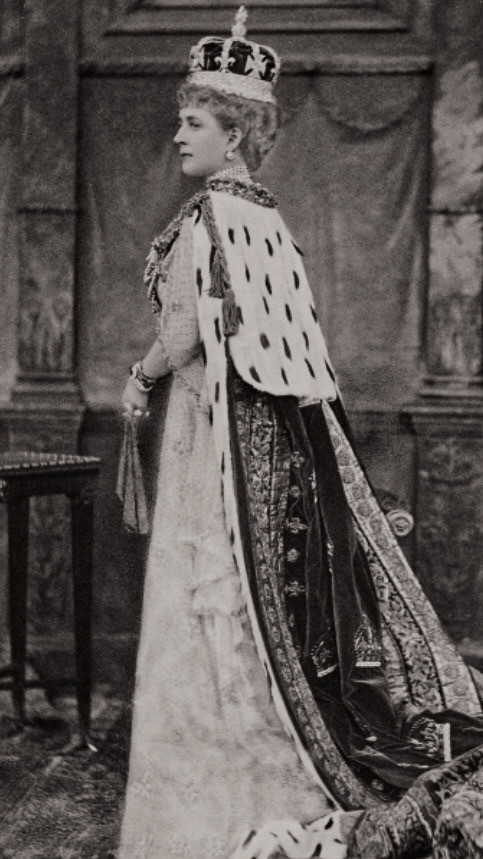
Queen Alexandra on the Coronation Day, 9 August 1902.
Alexandra had ensured through careful planning, fine detail and her now well-practised flair for what an occasion demanded in terms of dress, that she shone - spiritually and materially at this most splendid of events. The reporter for the New York Times was effusive in his praise as he looked at Alexandra on the throne: 'No wonder the whole nation admires her, for surely a younger looking woman of her years was never seen, or a more graceful one. She is endowed with that natural grace and instinctive knowledge of the fitness of things which the most laboriously acquired manners can never equal.'
Inside the Royal Wardrobe: A Dress History of Queen Alexandra by Kate Strasdin
56 notes
·
View notes
Photo

King Edward VII and Queen Alexandra leaving Buckingham Palace on Coronation day, 1902. (x)
92 notes
·
View notes
Text
Coronation Timings
Queen Victoria
Ascended the throne: 20 June 1837.
Coronation: 28 June 1838.
Crowned 12 months after her ascension to the throne.
Edward VII
Ascended the throne: 22 January 1901.
Coronation: 9 August 1902, planned for 26 June 1902 but deferred because the King had appendicitis.
Crowned 19 months after his ascension to the throne. The coronation was originally planned for 17 months after ascension.
George V
Ascended the throne: 6 May 1910.
Coronation: 22 June 1911.
Crowned 13 months after his ascension to the throne.
Edward VIII
Ascended the throne: 20 January 1936.
Coronation: Never happened; he abdicated on 11 December 1936.
George VI
Ascended the throne: 11 December 1936.
Coronation: 12 May 1937.
Crowned 5 months after his ascension; the coronation was planned for his brother Edward VIII and was held 16 months after the death of George V.
Elizabeth II
Ascended the throne: 6 February 1952
Coronation: 2 June 1953
Crowned 16 months after her ascension to the throne.
Charles III
Ascended the throne: 8 September 2022.
Coronation: 6 May 2023.
Crowned 8 months after his ascension to the throne.
He just can't wait to be king crowned.
101 notes
·
View notes
Text

Mary Leiter, Lady Curzon, wearing a 1903 gown, The Peacock Dress", by Jean-Philippe Worth (House of Worth) • Portrait by William Logsdail (English,1859-1944) • 1909

The Peacock Dress today behind glass at the Curzon family seat in of Kedleston Hall in Derbyshire, England. Via/ Flickr
Lord and Lady Curzon (who was American) would end up in India, then a part of the English Empire. Lord Curzon was made Viceroy of India, which made his wife the Vicereine- the highest title that a woman in India could hold at the time.
To celebrate the 1902 coronation of King Edward VII, Lord Curzon decided to hold a grand party in honor of the new monarch in 1903, known as the Delhi Durbar. For the occasion, Mary was to have the most incredible gown created which would showcase the talents of Indian artisans, a personal passion of the Vicereine. However, the dress was to be designed and sewn by famed French couturier, House of Worth. The Edwardian gown was made from fabric painstakingly embroidered in India, which was then sent to France to be fashioned before being sent back to India. What makes this gown so unbelievably unique is that every part of the gown and train is embroidered in alternating peacock feather patterns, earning it the nickname of the "Peacock Dress". The decoration comes from metal threads expertly affixed to the fabric. The gown is also embellished with glass beads, rhinestones, and shimmering iridescent green beetle wings. The gown is so covered in embroidery that it weighs 10 pounds, more than the weight of a small load of laundry!
The Resplendent Outfit: The outrageous, extravagant, often humorous, and sometimes beautiful outfits worn by the subjects of old portraits.
Outrageous ? (It depends on where you sit.)
Extravagant ✅️
Humorous. ❎️
Beautiful. ✅️
#portrait#art#painting#royal portraits#english artist#peacock dress#early 20th century fashion#house of worth#historical fashion#the resplendent outfit#william logsdail#edwardian fashion
19 notes
·
View notes
Photo

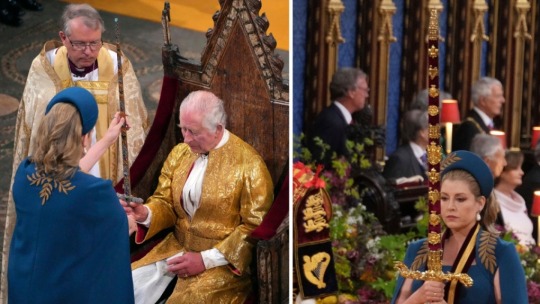
Onwald mæg wel reccean se þe ægðer ge hiene habban con ge wiðwinnan.*
- Old English
He wields power well who can both hold and resist it.*
Penny Mordaunt, Leader of the House of Commons and Lord President of the Privy Council, took on a leading role during the coronation service at Westminster Abbey of King Charles III. Many commentators agreed she stood out for doing such a sterling job in standing to attention and holding up a sword weighing around 3kg for a good part of the proceedings. She didn’t waver once.
It’s all the more surprising that the upward political trajectory of the MP from Plymouth had flatlined after she had a promising junior ministerial career before losing out twice in the Tory leadership elections to Liz Truss and later Rishi Sunak.
It was the ill-fated Truss in her brief stint as Prime Minister who had given the 50 year old Mordaunt the wooden spoon of political offices, Leader of the House of Commons, often seen as half-way house for a minister on his way down the greasy pole of ministerial politics. Sunak kept her in the same position after annoying Sunak loyalists for staying in the leadership race to the bitter end. In that position she has thrived somewhat for her debating skills and being good on her feet as well being loyal to the Prime Minister.
Little did anyone think - least of Mordaunt - that as Leader of the Commons she would also breathe life into the nondescript title of Lord President of the Privy Council. But in one of the more arcane details of that title is the right to hold the Sword of State in any royal coronation.
As Lord President of the Privy Council she was expected the wear the august robes of that office but chose instead for a more modest presentation of a blue dress with mute gold olive leaf trimmings. As Lord President of the Privy Council, Mordaunt exchanged the larger Sword of State, a steel blade with a silver-gilt hilt that symbolises royal authority, for the jewelled Sword of Offering, which the Archbishop of Canterbury Justin Welby then placed in the King's right hand. Mordaunt later redeemed the sword by offering 100 newly minted 50 pence coins and carried the sword before the King for the rest of the service.
Symbolising the protection of good and the punishment of evil, the jewelled sword was used as a Sword of Offering at the coronation ceremony of George IV in 1821. It wouldn't appear again at a coronation ceremony until 1902 for Edward VII and it has been featured at all subsequent coronations since. The sword features partly blued and gilt steel decorated on both faces with national emblems, including roses, thistles and shamrocks, while the hilt and scabbard are decorated with numerous jewels such as diamonds, rubies, sapphires and emeralds.
There is no question that Penny Mordaunt cemented herself in the public consciousness, with even Labour counterparts commenting that she looked 'damn fine' and 'stole the show'. Admiration for her sword-bearing skills at the coronation might just reignite her political fortunes especially if Sunak and his government are widely expected to lose the upcoming general election. She may be third time lucky at getting the chance to be the leader of the Tory party. In any case many would agree in watching her steadfast performance at the coronation, it really might be the case that the ‘Penny is mightier than the sword’.
#Old English#oe#quote#penny mordaunt#mordaunt#coronation#king charles III#leader of the commons#privy council#sword#sword of state#sword of offering#monarchy#britain#british monarchy#ceremony#ritual#politics
55 notes
·
View notes
Text

* Coronation Tiaras *
Winifred Cavendish-Bentinck, Duchess of Portland, wore the Portland Diamond Tiara for the coronation of King Edward VII at Westminster Abbey on 9 August 1902.
132 notes
·
View notes
Text
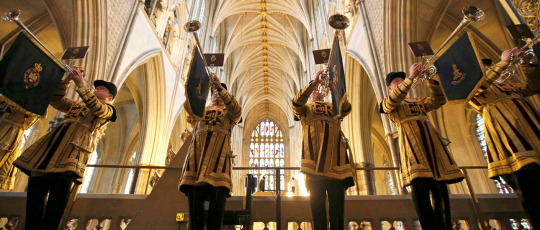
Coronation Music at Westminster Abbey
The Royal Family | Published 18 February 2023
Twelve newly commissioned pieces of music will be performed at The Coronation of Their Majesties The King and The Queen Consort at Westminster Abbey on Saturday 6 May 2023, showcasing musical talent from across the United Kingdom and the Commonwealth.
A range of musical styles and performers blend tradition, heritage and ceremony with new musical voices of today, reflecting The King’s life-long love and support of music and the arts.
His Majesty The King has personally commissioned the new music and shaped and selected the musical programme for the Service.
Andrew Nethsingha, Organist and Master of the Choristers, Westminster Abbey, will be overseeing all musical arrangements and directing the music during the Service.
Sir Antonio Pappano, Music Director for the Royal Opera House, will be conducting the Coronation Orchestra which comprises a bespoke collection of musicians drawn from orchestras of The former Prince of Wales’ Patronages including the Royal Philharmonic Orchestra.
Six orchestral commissions, five choral commissions and one organ commission, have been specially composed for the occasion by world-renowned British composers whose work includes Classical, Sacred, Film, Television and Musical Theatre. Commissioned works include a new Coronation Anthem by Andrew Lloyd Webber, a Coronation March by Patrick Doyle, a new commission for solo organ embracing musical themes from countries across the Commonwealth by Iain Farrington plus new works by Sarah Class, Nigel Hess, Paul Mealor, Tarik O'Regan, Roxanna Panufnik, Shirley J. Thompson, Judith Weir, Roderick Williams, and Debbie Wiseman.
Soloists will include bass-baritone, Sir Bryn Terfel; soprano, Pretty Yende and baritone, Roderick Williams. The organ will be played by Sub-Organist, Westminster Abbey, Peter Holder, and Assistant Organist, Westminster Abbey, Matthew Jorysz.
The official Royal Harpist Alis Huws will perform as part of the Coronation Orchestra in recognition of The King’s long-standing and deeply held relationship and affiliation with Wales. One of the liturgical sections of the ceremony will also be performed in Welsh.
At the request of His Majesty, in tribute to his late father His Royal Highness The Prince Philip, Duke of Edinburgh, Greek Orthodox music will also feature in the Service performed by the Byzantine Chant Ensemble.
The Service will be sung by The Choir of Westminster Abbey and The Choir of His Majesty’s Chapel Royal, St James’s Palace, together with girl choristers from the Chapel Choir of Methodist College, Belfast and from Truro Cathedral Choir. The Ascension Choir, a handpicked gospel choir will also perform as part of the Service and The King’s Scholars of Westminster School will proclaim the traditional ‘Vivat’ acclamations.
Fanfares will be played by The State Trumpeters of the Household Cavalry and The Fanfare Trumpeters of the Royal Air Force.
Sir John Eliot Gardiner will conduct The Monteverdi Choir and English Baroque soloists in a pre-Service programme of choral music. A small group of singers from The Monteverdi Choir will also join the main choral forces for the Service.
Music by the likes of William Byrd (1543–1623), George Frideric Handel (1685–1759), Sir Edward Elgar (1857–1934), Sir Henry Walford Davies (1869–1941), Sir William Walton (1902–1983), Sir Hubert Parry (1848–1918) and Ralph Vaughan Williams (1872–1958) has historically featured in the Service over the past four centuries and will be included in the programme along with the music of one of Britain’s most loved and celebrated living composers, Sir Karl Jenkins.
102 notes
·
View notes
Text

Last night, The Royal Family have released further details on the Coronation.
The following information are taken from the Royal Family Website, The Royal Collection Trust and my own research on the Coronation of King George VI and Queen Elizabeth in 1937.
The Queen's Regalia:
💍 The Queen Consort’s Ring:
A ruby in a gold setting, was made for the Coronation of King William IV and Queen Adelaide in 1831, and has been used by three further Queens Consort; Queen Alexandra, Queen Mary, and Queen Elizabeth The Queen Mother. During her coronation act, the Archbishop will put it upon the fourth finger of her right hand.
👑 The Queen Consort’s Crown:
Queen Camilla's choice to be crowned with Mary’s Crown marks the first instance in modern times of an existing crown being used for the Coronation of the Consort. Ahead of the Coronation, minor changes and additions to Queen Mary’s Crown are being undertaken, such as the as inclusion of the Cullinan III, IV and V diamonds which were part of Queen Elizabeth II’s personal jewellery collection for many years. The design was inspired by Queen Alexandra’s Crown of 1902. Like Queen Alexandra’s Crown, it can be worn without the arches in the form of a circlet, which Queen Mary wore for the Coronation of her son, King George VI, in 1937.
🔱 The Queen Consort’s Sceptre and Rod with Dove:
The Queen Consort’s Sceptre with Cross was originally supplied for the coronation of Mary of Modena, Queen Consort of James II, in 1685 by Robert Vyner, and is inlaid with rock crystals. During her coronation, it will be placed into her right hand.
Mirroring the Sovereign’s Sceptre with Dove, the Queen Consort’s Rod with Dove is symbolic of ‘equity and mercy’ and the dove, with its folded wings, is symbolic of the Holy Ghost. During her coronation, it will be placed into her left hand.
59 notes
·
View notes
Photo





Coronation Photos 1902, 1911, 1937, 1953, 2023.
95 notes
·
View notes